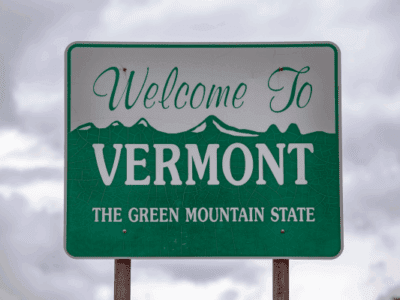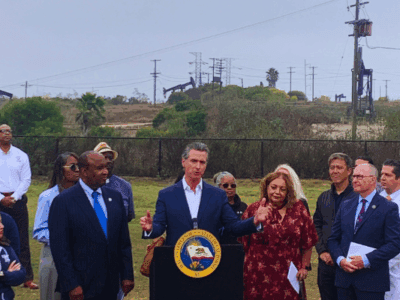Environmental Justice, Metrics & California’s San Joaquin Valley
 This week the California Environmental Protection Agency issued a disturbing but worthwhile report on environmental justice issues in California. That report confirms what many environmental justice advocates and state residents already assumed: that the San Joaquin Valley is–far and away–the most environmentally-challenged region of the state.
This week the California Environmental Protection Agency issued a disturbing but worthwhile report on environmental justice issues in California. That report confirms what many environmental justice advocates and state residents already assumed: that the San Joaquin Valley is–far and away–the most environmentally-challenged region of the state.
According to the CalEPA press release accompanying the report, the study is “the nation’s first comprehensive statewide environmental health screening tool.” It uses an interesting and relatively novel means of comparing the environmental health of California’s diverse society and regions: dividing the state by postal ZIP codes. Developed jointly by CalEPA and its Office of Environmental Health Hazard Assessment (OEHHA), the report uses 11 different types of pollution and environmental factors, along with seven population characteristics and socioeconomic factors, to create environmental health “scores” for each zip code in the State of California. The idea is to use these rankings to help state decision-makers prioritize grants, investments, clean-up efforts and (critically) enforcement efforts within the most environmentally disadvantaged communities in California.
The CalEPA study of 1,769 distinct ZIP code areas considers such factors as pesticide use, traffic density and groundwater threats. It scored the environmental hazards in each area, along with human health factors such as the number of children and elderly in the area, the birth weights of infants, asthma rates and poverty levels.
As documented in a recent Associated Press story on the new CalEPA report, that report confirms the San Joaquin Valley’s dubious status as ground zero for California’s pollution and environmental health crises. Indeed, seven of the 10 zip codes with the “highest” scores are located in the San Joaquin Valley. (The other three are in Los Angeles.) A related story run by the Sacramento Bee notes that three Fresno ZIP codes and three from Stockton crack CalEPA’s top 10 list of the most unhealthy ZIP codes in California. (See accompanying map, courtesy of the Bee.) The single unhealthiest, most polluted ZIP code in California is an agribusiness neighborhood in Fresno County: 93706. In that area, reports CalEPA, poverty ranks in the 97th percentile; residents’ asthma rates rank in the 99th percentile; and pesticide pollution ranks in the 91st percentile.
 The Brown Administration, and especially CalEPA Secretary Matt Rodriquez, Assistant Secretary for Environmental Justice Arsenio Mataka and OEHHA Director George Alexeeff, are to be commended for their focused efforts to document in quantitative terms the disproportionate impacts of environmental pollution across California. Previously, political leaders of both political parties pretty much treated environmental justice issues like the weather: everyone talked about it, but no one did much about it. Refreshingly, that finally seems to be changing.
The Brown Administration, and especially CalEPA Secretary Matt Rodriquez, Assistant Secretary for Environmental Justice Arsenio Mataka and OEHHA Director George Alexeeff, are to be commended for their focused efforts to document in quantitative terms the disproportionate impacts of environmental pollution across California. Previously, political leaders of both political parties pretty much treated environmental justice issues like the weather: everyone talked about it, but no one did much about it. Refreshingly, that finally seems to be changing.
With the environmental data now in, the question shifts to what California’s political leadership and people are going to do to rectify the alarming, wildly-varying public health and environmental pollution problems documented in the CalEPA report?
A partial answer lies in California’s ongoing, well-publicized efforts to implement the landmark Global Warming Solutions Act, better known as AB 32. The California Air Resources Board launched its cap-and-trade program, a key component in ARB’s multifaceted efforts to reduce the state’s greenhouse gas emissions, late last year. A portion of the allocations distributed by ARB under that program will be auctioned to California businesses, generating new revenue for state coffers. Also in 2012, the California Legislature enacted follow-up legislation, SB 535, which requires that at least 10% of revenues generated by those auctions be devoted to disadvantaged communities that “already face disproportionate impacts from substandard air quality in the form of higher rates of respiratory illness, hostipalizations and premature death.”
CalEPA’s just-issued report provides a literal and policy roadmap of how those new state revenues should be allocated. But given the breadth and scope of the environmental justice challenges the report uncovers, let’s hope that the allocation of cap-and-trade auction proceeds mandated by SB 535 is only the first step in multifaceted efforts to improve the lives and environment of those living in California’s most polluted and unhealthy neighborhoods.






Reader Comments